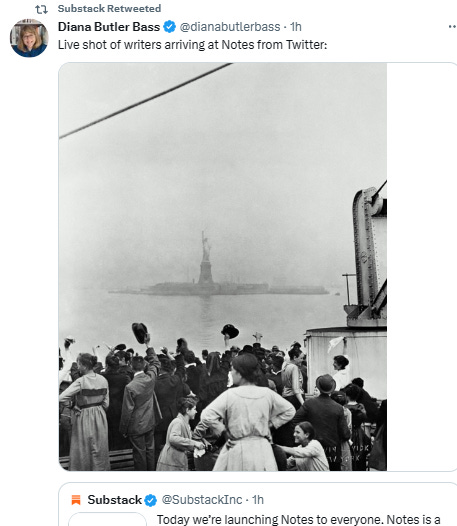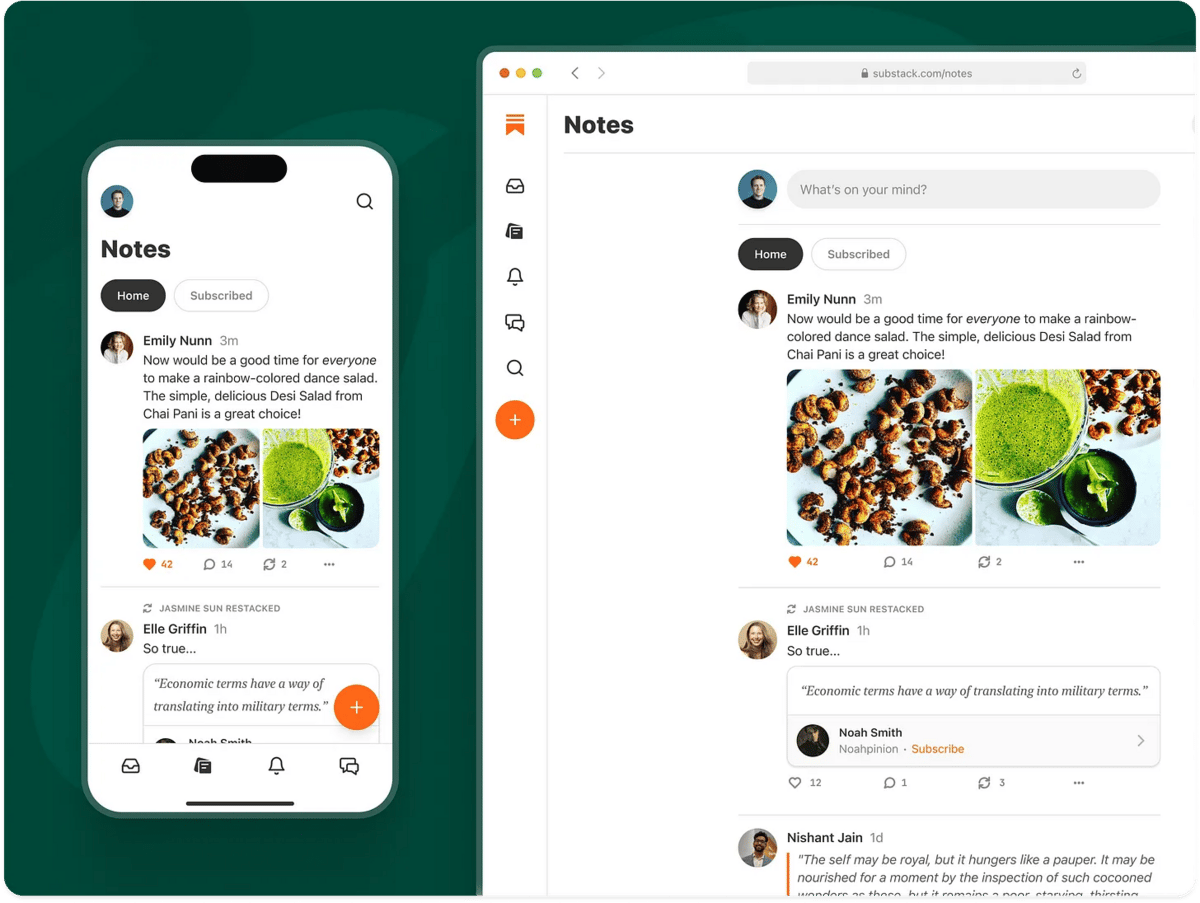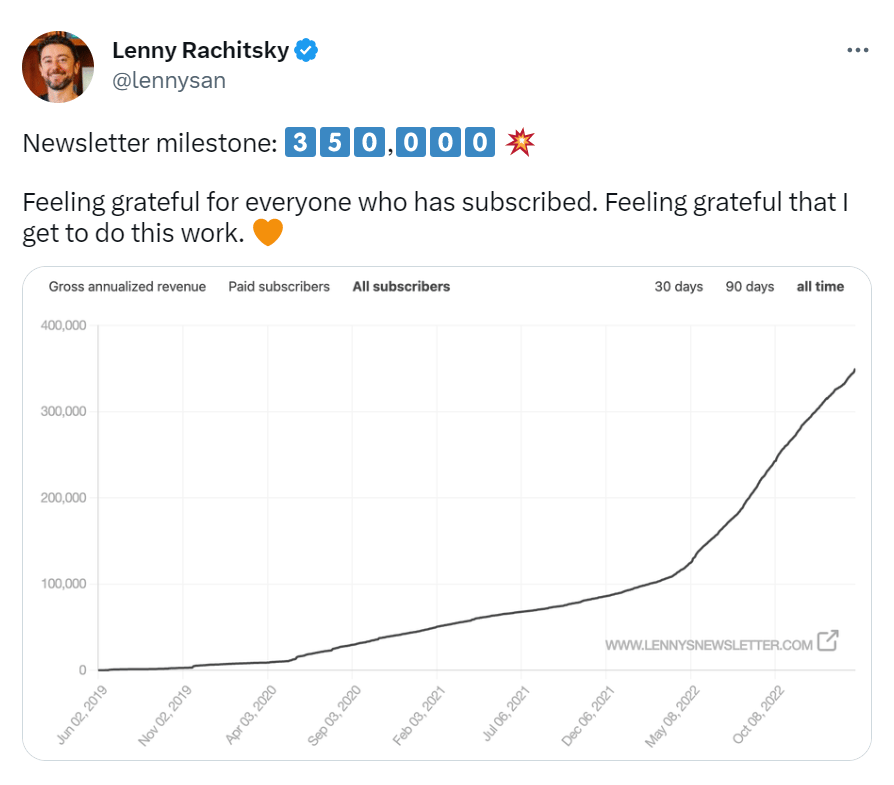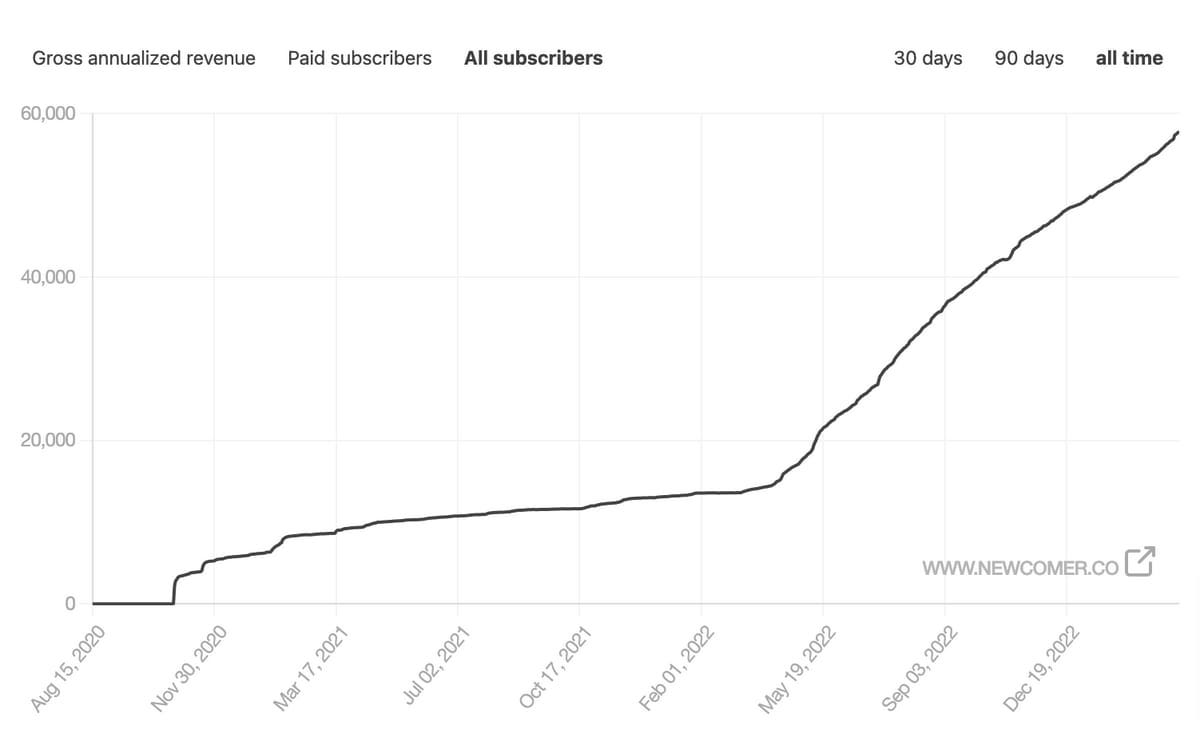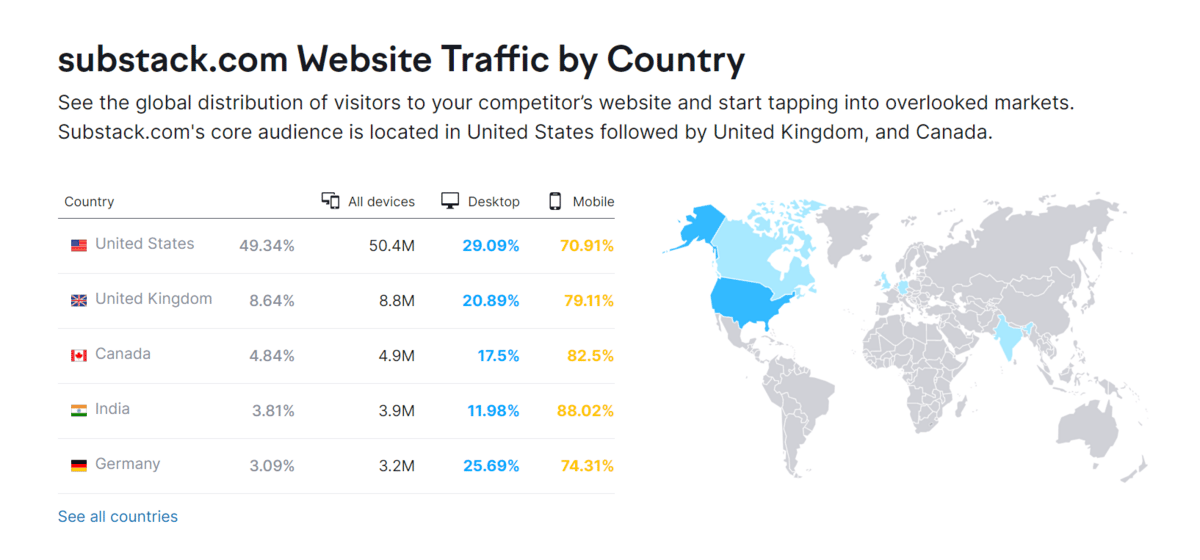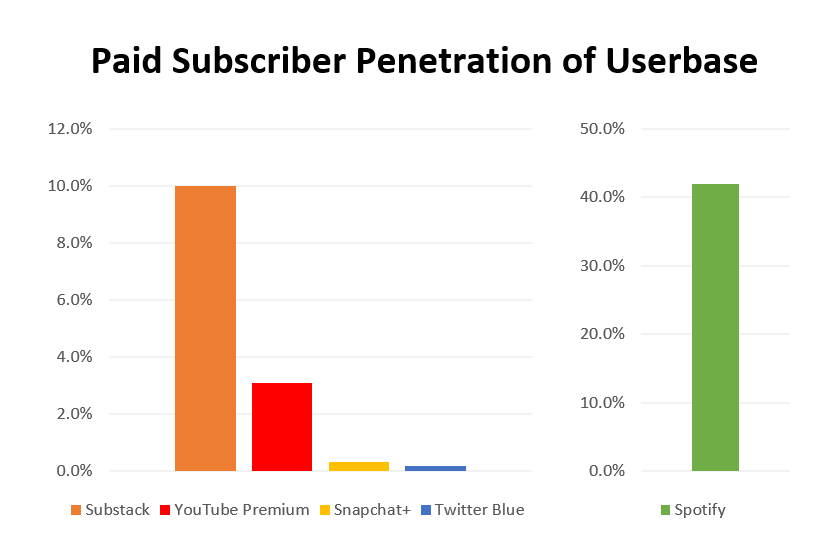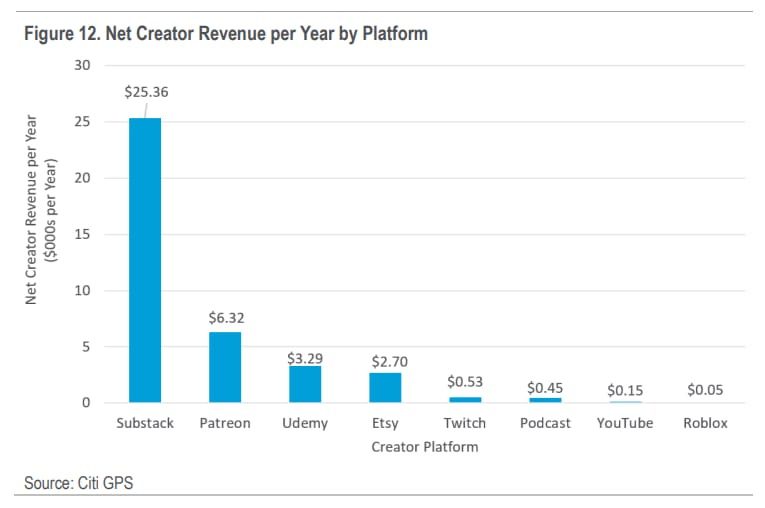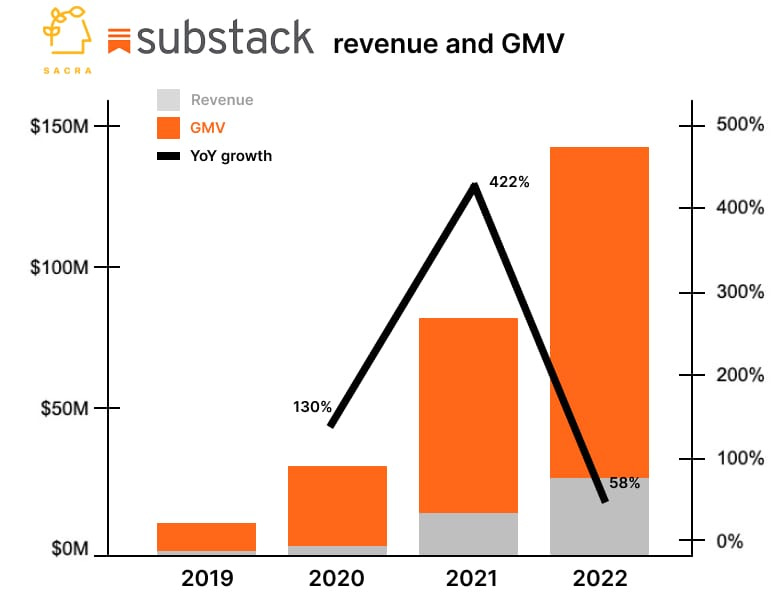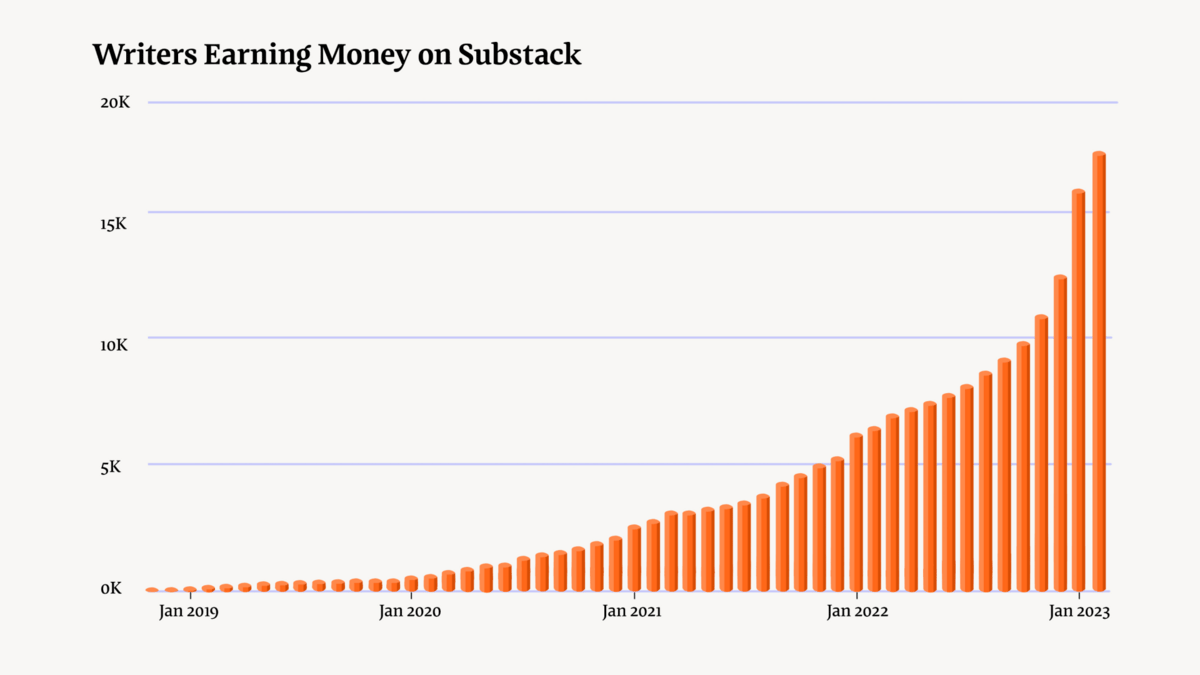Eric Newcomer, former writer in Bloomberg, share a good thought about NOTES (then get replied by one of Substack founder, Chris Best)
My big question about how Notes evolves is Will this be a shared conversation like Twitter where posters generally need to engage with “the conversation” to stay relevant. Or will it be more like a Substack where authors have more latitude to drive the focus.
Related to that: How much will different newsletter writers interact and form one conversation vs publish notes in parallel aimed at their specific audiences?
I get that these divides aren’t so simple. Newsletters respond to the conversation. And Twitter has many separate conversations at once. But there is more of a feeling on Twitter that people are riding a conversation whereas Substacks are better positioned to set their own agenda. My inclination is that it would be better if Notes were pulling me toward staying on the topic of my Substack. Many reporters have crashed on the rocks on Twitter by opining on topics beyond what their readers care about. I feel like Notes would be most valuable if I’m talking to people interested in my newsletter topic (+ other writers). If I’m just chasing audience generally then there’s more of a pull to chatter about a broad range of topics. At the same time, it’s fun to think people care about your opinions on everything.
Chris Best replied:
I wonder if there is a sweet spot somewhere in between. If you just want to talk to your audience about the exact topic, you can use comments/chat.
Ideally Notes feels like not one giant public place with everyone, but a circle with the parts of the Substack network that you participate in where you can have interesting conversations in (and around!) your interests.
This past week (I count already 115 hours, per 10 am ET) substack got a sleight of restriction on twitter (now with name “X”). Substack dropped what may have felt like an insignificant new feature, Notes. But it lined up with something I’ve been thinking about for awhile: is Substack the next big social network?
Series of features and deliberate product choices over the years (and the fact Twitter recently started aggressively muting any mention of Substack in its feed) lead me to think it has a chance.
If you work in marketing or growth at a startup (or even a larger company), half the battle is just understanding how the game on the field is changing.
Substack just announced a new feature, Notes (around 9.20 am ET). It seems small, as it’s essentially “tweets for Substack”. But it scared Twitter enough to suppress any mentions of Substack in outbound links. In my opinion, this continues Substack’s march towards becoming what most people would call a social network - and possibly something much bigger.
*a lot vacancies on tech sector in this note
After Elon Musk takeover Twitter on November, already a lot brouhaha, chaos, “weird” situation in Twitter. I still remind this moment: chaos counting (very tight) for seat in Colorado-03 (Adam Frisch vs Boebert), and same time, a lot Twitter employee posting meme about Titanic (violin playing when Titanic has sunk) because he/she resign from Twitter. Also posting his/her Laptop with Twitter stuff or ID Card of Twitter and saying goodbye.
I feel a bit: enthusiasm for NOTES at least in the last 2 hours, like when Twitter still uses “a big whale” if hang / error. Very difficult to tweet, but everyone happy.
If you’re not familiar with Substack, it started in 2017 as the best tool for writing a blog. It had a simple editor that was easy to use, generated great SEO ranking out of the box, and placed heavy emphasis on email collection and the reader experience.
I’m probably getting the exact order of operations wrong, but Substack then enabled writers to paywall specific content (or maybe it started with this?), giving the tools to run a premium content business. Among many other features, it added things like podcasts and video support, cross-newsletter recommendations, and eventually a mobile app (and chat).
I admit it's very late to have a substack domain because in 2017 I still push to use facebook notes and tumblr. Glad, since 2017 - July 2021 no one uses “PRADA” for the Substack domain. Sadly, already people use “INDONESIA” and “DIPLOMATIC” for Substack domain.
Looking across the landscape of creator-focused products, the first tier (at least in terms of valuation) include YouTube, Instagram, and TikTok. These are each worth north of $100 billion, primarily because they help creators solve their most urgent problem: distribution. We can argue how well they actually solve this problem, but it does make these platforms almost impossible for creators to leave.
Next is the second tier of creator-related businesses, which typically help solve for monetization. This means they have a clear path to generating revenue, and includes companies like Patreon and Kajabi. While they enable creators to run a business, they don’t generally help grow them grow them, which is the most urgent problem for most content creators. If you only read a sentence or two about what Substack does, you’d probably think a tool for publishing a blog ends up in this second tier. But that would be incorrect.
Substack started helping creators with distribution a few years ago. In its early days it had a public leaderboard featuring its top writers, “recommended for you” articles below each post, a feed featuring all of a reader’s subscriptions, and eventually a standalone mobile app. Substack supercharged its distribution when it launched recommendations in 2022. You can tell exactly when this happened based on Lenny’s newsletter growth below.
Lenny is a former startup founder and spent seven years in growth and product roles at Airbnb. Or in other words, the exact person you’d expect to be good at growing a newsletter. He was already growing steadily, and recommendations added rocket fuel.
The boost from recommendations is even more noticeable looking at Newcomer, run by former Bloomberg journalist Eric Newcomer. It’s probably not a stretch to say Substack recommendations changed his life.
When Subtack’s mobile app launched in March of 2022, it added another way to pull someone in. And its news feed gave even more leverage on distribution. Prior, the primary way a reader came to Substack was through an email or inbound traffic from SEO and Twitter. According to Similarweb, over 70% of Substack’s traffic is on mobile, and I’d expect the speed of app adoption to surprise us. An app might also increase mobile conversion rates to paid.
Substack’s new Notes feature isn’t going to immediately solve for distribution. It’s actually launching as a separate side tab outside of the main feed. But it introduces a new content format to Substack: short-form text. Just like short-form video, it breaks text-based content into smaller and more digestible bites. Short-form text gives another reason for readers to open the app, which benefits every publisher.
Over time, a stream of consistently good Notes could build the same habit that drives us to open Twitter, TikTok, Instagram, or any other app with short-form content. The key difference is Substack does not monetize with advertising, and instead generates revenue from writers building deep relationships with their readers. This means its not incentivized to continuously increase time spent on its product, which is exactly what ad-driven social networks are forced to do.
Compared to traditional social media platforms, Substack’s subscription network is showing early signs of success. I’ve written about the convergence of advertising and subscription revenue models. Although Substack is smaller overall, its 2 million paid subscriptions represent a much higher penetration of its total userbase than others. (I’m assuming 20 million monthly unique visitors and that each paid sub is unique, both of which are probably not exactly correct). I don’t have perfect data, but paid subscriptions appear to be 10-50x higher than Twitter.
Source: SEC filings and corporate blog posts
While Twitter charges $8/month per user, since Substack subscriptions support individual publications, it can charge $8/month per subscription per user. I don’t think its crazy to think someone might subscribe to 10+ Substacks, giving it a much clearer path to more revenue per user than other content platforms.
This also gives Substack network effects. For a reader subscribed to 10+ publications, there’s much less friction to add one additional subscription vs the very first one on Twitter (or Facebook, or Instagram, or Snapchat). And they’re less likely to churn. For writers, less friction for readers makes Substack the logical place to host a paid product. This could get even more pronounced as Substack adds more features like live streaming, paid coaching, ecommerce, and more.
This high monetization means the average Substack writer makes nearly $25,000 per year, per Citi. That might not seem like a big number if you’re aware that some YouTubers make tens of millions per year. But high earners represent a very small % of the total (on an average of $150/year) and reflects that, despite being barely five years old, there’s a path for the long-tail of writers to earn a meaningful income on Substack.
So much so that when Substack had trouble raising a Series C from traditional growth stage investors in 2022, it’s $5 million round raised from its writer community was oversubscribed within 12 hours (more on the public raise here). The rationale from customers speak for itself:
“People sometimes ask me why I’m on Substack instead of a cheaper publishing platform. In the early days, my answer was because I could get Substack on the phone and get their advice. Even though that’s still true, my answer shifted to their recommendation feature once it started powering my free signups growth. But really, I’m on Substack because there’s a sense that there’s always a new feature on the way — that suddenly my business could get better because they had a great idea.”
To be clear, these growth investors are probably correct that Substack is overvalued if looking at its current financial metrics compared to similar companies. It technically had net revenue of negative $5.2 million in 2021 because it lost money on guaranteed minimum payments to writers (my understanding is it no longer does these guarantees). Based on the implied $590 million post-money valuation of this public round, it’s priced at a 31x multiple on estimated 2022 gross revenue compared to 5-10x for companies like Snapchat, Twitter, Pinterest, Kajabi, and Patreon. But it’s hard to argue with how compelling its product is, as Substack is what every ad-based social network wants to become.
As another adjacent comparison within media, Netflix has 13,612 titles globally (5,087 in the US), which is actually down 35% from 2015. Substack hosts 17,000 writers with paid subscribers, a number that’s increasing exponentially. Expanding beyond writers to other types of creators like podcasters, videomakers, musicians, and scientists (!) means things could just be getting started for Substack.
In a time where public trust in incumbent social networks seems to be at an all-time low, Substack started as a simple tool and evolved into a new type of network. It’s social, but in it’s own way. Its business model is exactly what the incumbents wish they had. And as it continues shifting usage towards its mobile app and builds up even more of its own distribution, it can layer in other forms of media on top of its subscription network. Plus, it can always borrow elements from the incumbent’s advertising models when it makes sense.
Ultimately, Substack is building “an economic engine for culture” (their words, not mine). It’s a business in a box that gives content creators a direct relationship with their audience and customers. And if you take all the features it supports: text, video, audio, etc; it’s essentially social media where paid content is expected by default. Or as Substack likes to call it, a subscription network.





